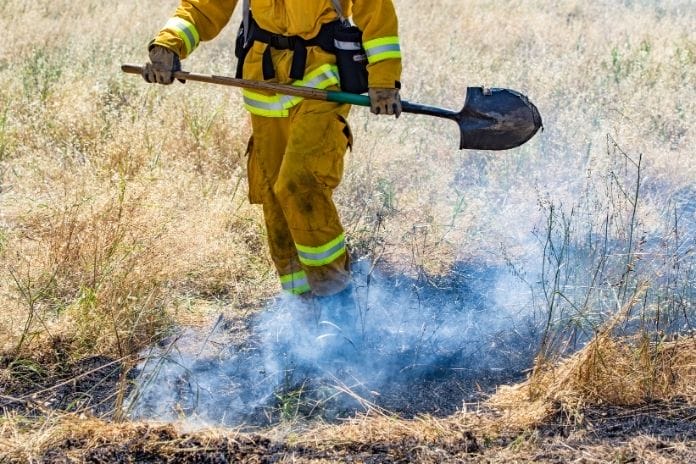Just because a forest fire has been extinguished doesn’t mean that a wildland firefighter can simply pack up and go home. When many people think of wildland firefighters, images of heroic figures entering burning forests and quenching uncontrollable blazes often come to mind. While fighting flames is part of the job, there’s still a lot of work to be done after the final flames die out. To learn about what wildland firefighters do after a fire, continue reading.
What Mop-up Means
After a forest fire burns through an area or has been securely contained within a fire line, wildland firefighters engage in a process known as mop-up. Essentially, mop-up is the act of extinguishing residual flames and preventing a wildfire from reigniting after the main blaze has passed or been controlled. Mopping up is one of the final stages of fire suppression. Until thorough mop-up has been conducted, a wildfire is not considered completely extinguished.
What the Mop-Up Process Entails
The process of mopping-up after a wildfire can involve many different tasks. Some of the main responsibilities of firefighters placed on mop-up duty include:
- Extinguishing Spot Fires: One of the primary responsibilities of a mop-up crew is to extinguish any spot fires that remain along a completed control line. Firefighters will put out any burning material along or near the control line to prevent the fire from spreading or reigniting.
- Moving Burned Debris: Mopping up often also involves moving burned debris near the control line—especially large logs located on or near hills or other declines. This process is to prevent logs or other debris from rolling downhill and spreading the fire further.
- Turning Over Stumps and Logs: To ensure that a fire has been completely extinguished, wildland firefighters will often have to turn over stumps, logs, and other items throughout the burned area to make sure there aren’t any embers or lingering flames still burning beneath them.
- Felling Snags: Another thing that wildland firefighters do after a fire is cut down dead or dying trees which can serve as a prime source of fuel for any stray embers.








































